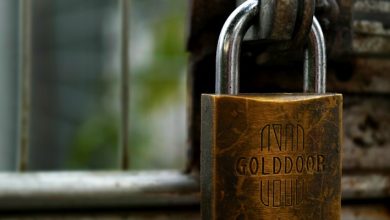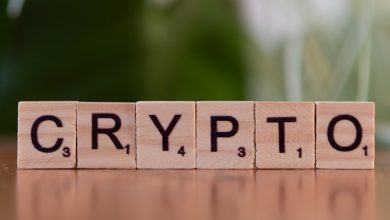How to Spot Fake Cryptocurrency Wallets

- Understanding the risks of fake cryptocurrency wallets
- Tips for identifying legitimate cryptocurrency wallets
- Common red flags to look for in fake wallets
- Protecting your digital assets from fraudulent wallets
- Steps to verify the authenticity of a cryptocurrency wallet
- Educating yourself on the dangers of using counterfeit wallets
Understanding the risks of fake cryptocurrency wallets
When it comes to cryptocurrency wallets, it is crucial to be aware of the risks associated with fake wallets. These fraudulent wallets are designed to trick users into providing their private keys or seed phrases, which can result in the loss of their digital assets. Fake wallets can also be used to steal personal information and compromise the security of your funds.
One common tactic used by scammers is to create fake wallets that closely resemble legitimate ones. These fake wallets may have similar names, logos, and interfaces to deceive users into thinking they are using a trustworthy wallet. It is essential to research and verify the authenticity of a wallet before downloading or using it.
Another risk of fake wallets is the lack of security measures in place to protect your funds. Legitimate wallets often have robust security features, such as encryption and multi-factor authentication, to safeguard your assets. Fake wallets, on the other hand, may not have these protections in place, making it easier for hackers to access your funds.
Tips for identifying legitimate cryptocurrency wallets
When it comes to identifying legitimate cryptocurrency wallets, there are a few key tips to keep in mind to avoid falling victim to fake wallets:
- Check the reviews and ratings: Before downloading a cryptocurrency wallet, take the time to read reviews and check ratings from other users. Legitimate wallets will typically have positive feedback and high ratings.
- Verify the developer: Make sure to research the developer behind the wallet. Legitimate wallets will have a reputable and transparent development team with a strong track record in the industry.
- Look for official websites: Only download cryptocurrency wallets from official websites or app stores to ensure you are getting the authentic version. Avoid third-party websites or links shared through unsolicited emails or messages.
- Check for security features: Legitimate wallets will have robust security features in place to protect your funds. Look for features such as two-factor authentication, biometric login, and encryption.
- Avoid wallets with hidden fees: Be wary of wallets that charge high fees for transactions or have hidden fees that are not clearly disclosed. Legitimate wallets will be transparent about any fees associated with using their services.
By following these tips, you can help protect your cryptocurrency investments and avoid falling victim to fake wallets that could compromise your funds.
Common red flags to look for in fake wallets
When looking for a cryptocurrency wallet, it is essential to be cautious of potential red flags that may indicate a fake or fraudulent wallet. Here are some common signs to watch out for:
– **Lack of Encryption**: One of the most critical indicators of a fake wallet is the absence of proper encryption. Legitimate wallets use robust encryption to secure your digital assets, so be wary of any wallet that does not provide this essential security feature.
– **Unauthorized Withdrawals**: If you notice unauthorized withdrawals or transactions from your wallet, it is a significant red flag that your wallet may be compromised or fake. Always monitor your wallet activity closely to detect any suspicious behavior.
– **Poor Reviews or Reputation**: Before choosing a cryptocurrency wallet, make sure to research its reputation and read reviews from other users. If you find a wallet with overwhelmingly negative feedback or a lack of reviews, it may be a sign that the wallet is not legitimate.
– **Unsolicited Emails or Messages**: Be cautious of wallets that send unsolicited emails or messages requesting personal information or login credentials. Legitimate wallet providers will never ask for sensitive information via email or message.
– **Lack of Two-Factor Authentication**: Two-factor authentication adds an extra layer of security to your wallet by requiring a second form of verification for access. If a wallet does not offer this essential feature, it may be a fake or insecure option.
– **Suspicious Website URLs**: Always double-check the website URL of the wallet provider to ensure it is legitimate and secure. Fake wallets may use slightly altered URLs or phishing tactics to deceive users, so be vigilant when entering your information.
– **No Customer Support**: Legitimate wallet providers offer reliable customer support to assist users with any issues or concerns. If you encounter a wallet with no visible customer support options or contact information, it may be a red flag that the wallet is not trustworthy.
By staying vigilant and keeping an eye out for these common red flags, you can better protect your cryptocurrency assets and avoid falling victim to fake wallets. Always prioritize security and thorough research when selecting a wallet to safeguard your digital funds.
Protecting your digital assets from fraudulent wallets
When it comes to protecting your digital assets from fraudulent wallets, there are a few key steps you can take to ensure that your funds are safe and secure. One of the most important things you can do is to always do thorough research before choosing a cryptocurrency wallet. Look for wallets that have a good reputation in the crypto community and have been around for a while.
Another important step is to double-check the website or app where you are downloading the wallet from. Make sure that you are using the official website or app of the wallet provider, and not a fraudulent site that is trying to steal your information. It’s also a good idea to read reviews and testimonials from other users to see if anyone has had any issues with the wallet in the past.
Furthermore, be cautious of any wallet that asks for your private keys or seed phrase. Legitimate wallets will never ask you for this information, as it is the key to accessing your funds. If a wallet asks for this information, it is likely a scam and you should avoid using it at all costs.
By following these steps and staying vigilant, you can protect your digital assets from falling into the hands of fraudulent wallets. Remember to always do your due diligence and trust your instincts when it comes to choosing a cryptocurrency wallet.
Steps to verify the authenticity of a cryptocurrency wallet
To verify the authenticity of a cryptocurrency wallet, there are several steps you can take to ensure that you are using a legitimate and secure platform. One of the first things you can do is to check the website of the wallet provider. Look for any signs of suspicious activity or fake branding. Additionally, you can search for reviews and feedback from other users to see if there have been any reported scams or issues with the wallet.
Another important step is to verify the wallet’s address. Make sure that it is listed on the official website of the wallet provider and that it matches the address you have been given. This will help you avoid falling victim to phishing scams or fake wallets that are designed to steal your cryptocurrency. Additionally, you can check the wallet’s security features, such as two-factor authentication and encryption, to ensure that your funds are safe.
It is also important to verify the team behind the cryptocurrency wallet. Look for information about the developers and founders of the wallet to see if they have a good reputation in the industry. You can also check if they have a presence on social media or other platforms to confirm their legitimacy. By taking these steps, you can protect yourself from fake cryptocurrency wallets and ensure that your funds are secure.
Educating yourself on the dangers of using counterfeit wallets
It is crucial to educate yourself on the risks associated with using counterfeit wallets in the world of cryptocurrency. These fake wallets are designed to steal your private keys and ultimately your digital assets. By understanding the dangers of using counterfeit wallets, you can protect yourself from falling victim to these malicious schemes.
Counterfeit wallets often mimic the appearance of legitimate wallets, making them difficult to spot for the untrained eye. It is essential to research and familiarize yourself with the characteristics of authentic wallets to differentiate them from fake ones. By being informed, you can avoid the potential loss of your cryptocurrency investments.
One of the main dangers of using counterfeit wallets is the risk of having your funds stolen. These fake wallets are created by scammers with the sole purpose of deceiving unsuspecting individuals. Once you input your private keys into a counterfeit wallet, the scammers can access your funds and drain your account without any way for you to recover them.
Additionally, using counterfeit wallets can expose your personal information to cybercriminals. These fake wallets may contain malware or malicious code that can compromise the security of your device. By using reputable and secure wallets, you can safeguard your sensitive data and minimize the risk of falling victim to identity theft or other cybercrimes.



